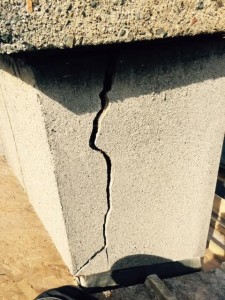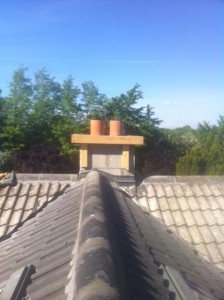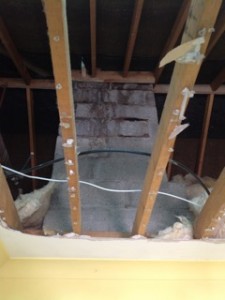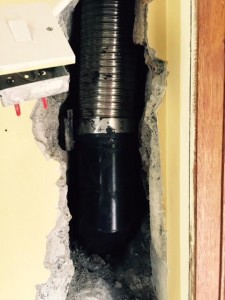A cracked chimney on the outside is most likely representative of damage inside the chimney, most probably to the lining of the chimney as a result of a chimney fire. This chimney damage can affect you and you home in a number of ways:
1. Fire and Health Risk
2. Loss of Efficiency
The main job that your chimney does for you is to remove the noxious gases that very often contain carbon monoxide, chemicals and soot. The chimney acts as a vent for these to escape safely from your dwelling. If gaps, cracks or holes appear in the lining of your chimney, it could mean that these dangerous items are not fully escaping from your home and deposits of soot and tar contamination are building up in the masonry of your chimney stack. Gaps and Cracks can happen due to wear and tear, poor materials used in construction, poor workmanship and are very often the result of a chimney fire.
If gases and other elements are escaping through cracks in the chimney, they will inevitably speed up the deterioration of the chimney stack itself. Left unchecked the stack may need to be completely demolished and rebuilt.
In Ireland, a primary cause of chimney fire is excessive levels of soot or tar deposits in the lining of the chimney and the primary cause of soot and tar deposits is damp fuel. Tar deposits are of course highly flammable. Turf is the greatest contributor to this problem. Properly dried turf is not an issue but most people are burning turf which was saved from the bog just a few months prior. All solid fuels should have a moisture content below 20% to avoid tar and soot issues in the chimney but very often turf has high levels of moisture, 40%+, in the core of the sod. The outside may feel dry but break it in half and the core may feel damp. You can test exactly how damp with a properly calibrated moisture meter. Turf should be left to dry in a well ventilated shed for at least a year prior to combustion or until the moisture content in the turf is below 20%. This will ensure a higher heat yield from your fuel and your chimney will remain relatively clean thus significantly reducing your chances of a chimney fire.
Our CCTV Chimney survey will show up any defects inside your chimney stack. If you do indeed have chimney issues we can provide you with a quotation to rectify the problem. We can also liaise with your insurance company or loss assessor in the event of a chimney fire.




